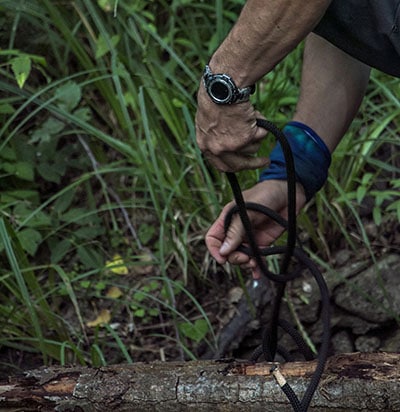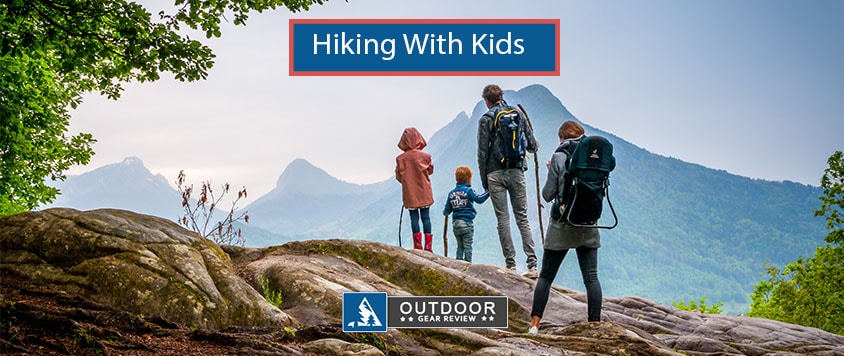
Top 5 Backpacking Skills To Know Before You Hit The Trail

Before setting off on your backpacking adventure ensure that you are comfortable with a few required skills. Different adventures require different skills. Over time, you will learn a vast array of skills to keep you safe and happy on the trail. The goal on this article is to provide you with a high-level overview of the most essential skills.
You may want to also check out our article on the Top 6 backpacking situations you need to be prepared for after you are done with this post.
Navigation
I like to think that nobody is ever truly lost. Instead, I tend to think someone is just taking an unknown detour. These unknown detours can be quite frustrating or dangerous in the wrong situations. The ability to navigate can prevent these unknown detours or help get you back on the right track.
Your primary tools for navigation are a map and compass. A GPS is another tool, but it should not be you primary tool. Batteries can die and positioning signals can be lost. Before learning how to use these tools in dire situations, practice in known areas or on trails that do not stray far from civilization. There are numerous GPS devices that will work for any type of adventure.

Learning to observe nature is also a good navigation skill, especially when in a bind. The sun can be used to determine direction through 2 common methods.
- Shadow compass – Place a 3 foot long stick in the ground. Find the shadow of the tip of the stick and mark the ground. Wait 20 minutes and mark the new location. Draw a line between the two points. This line represents an approximately east to west direction.
- Analogue watch – Place the watch in front of you and point the hour hand towards the sun. The mid-point between the hour hand and 12 o’clock is south for the northern hemisphere. For the southern hemisphere, this point represents north.
Vegetation is another good indicator, as moss or other flora will be observed more on the southern side of trees for the northern hemisphere. For the southern hemisphere, this side represents north.
If you do take an unknown detour, stay calm. Use your skills to make an educated decision. Once you feel confident in that decision, continue on. Another option is to retrace your steps back to your last “known” location.
 Knots
Knots
Knot tying is an integral part of a backpacker’s skillset. Practice tying knots at home and also learn to recognize which type of knot should be used in particular situations. A few common knots are the following:
- Sheet bend – good for joining 2 ropes together; it will not slip under tension
- Bowline – most common and used for hanging food bags or lowering heavy objects
- Two half hitches – used to secure a rope to a round object such as a tree. Can be used to tie a hammock onto a tree, think guy out to a tree.
- Clove hitch – used for tying a piece of rope to a tree, like hanging a rope swing. The knot uses friction to stay put. As you pull on one end of the rope it pulls the other end of the rope in the opposite direction making the knot even tighter.
Selecting a Campsite

When possible, set up camp at a pre-existing campsite. This minimizes impact to the environment. In most cases, pre-existing campsites have been chosen because of their ideal location. If you need to select a new location, consider the following.
- Pick a relatively flat spot, avoid gullies or depressions where water can pool
- Avoid lone trees, as they can attract lightning
- Pick a location under large trees, but make sure there are no dead branches that could fall
- Avoid exposed ridges, as the weather can get quite unwelcoming
- Avoid fragile vegetation
Starting a Fire
A fire can be a lifesaver when the temperatures dip or you are soaked to the bone. If possible, practice this at home first as trying to build your first fire in wet conditions or high winds can be downright frustrating. Remember to practice Leave No Trace tactics.
The first step is preparing an area for a fire. The key here is to ensure that the fire cannot spread beyond the intended area. Remove any vegetation from directly above and around the intended area. The most common technique is to then outline the area with large rocks. The rocks should not be touching other vegetation as they will heat up and could ignite the touching vegetation. Another option is to build a dirt mound.
Once the area is prepped you want to lay down a base of tinder (dry leaves, small twigs, grass, paper, etc.). Place kindling (small sticks) on top of the tinder in a tee-pee shape. Once the fire gets going you can add progressively larger pieces of wood. You need 2 things to keep a fire going, good ventilation and more wood. Remember to keep a watchful on your fire, as it can grow out of control quickly. Always ensure that the fire is completely out before leaving it unattended. Only you can prevent forest fires!
Food Hanging

When backpacking, keep all food away from your tent for bear safety.
Hanging your food at night is highly recommended. Not only does it prevent bears from getting at your food it will prevent other animals such as raccoons from getting at your source of nourishment. This skill takes a little practice to learn, but after becoming proficient it should only take a few minutes to get your food out of reach.
The most common food hanging method is known as the PCT method, named after the Pacific Crest Trail where bears can be a nuisance.
Done properly, your food bag will be suspended at least 10 feet above the ground and will be at least 5 feet below the branch. It will also be about 5 feet from the tree trunk.
These distances prevent animals from reaching the food bag from the nearest limb. Some may prefer not to hang a food bag but prefer to carry a bear canister, however, it can add an extra 3 lbs to your pack. Either way, make sure your food is securely put up and or away to keep all animals out of reach of your vital food source.
Get Practicing
Knowing and practicing these essential backpacking skills before you hit the trail can be lifesaving. Being fully prepared will keep you safe and happy on the trails ahead. Venture onward.
If you have questions or comments, please let us know by writing your thoughts below 🙂





[…] adventure and confidence. Being out in nature instills self-awareness and decision making & backpacking skills which are helpful in many of life’s obstacles. Amazing memories will be […]